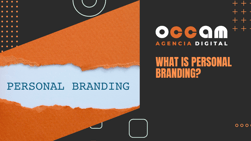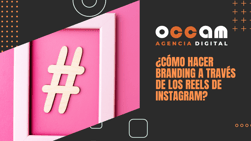Index Content
If you have a business, you will know how important it is to design your brand and the corporate entity of your company. Would you like to know how to build your brand design in the most effective way? We tell you how!
what is brand design and corporate image?
Surely on more than one occasion it has happened to you that, when you know a brand, you end up recognising its logo anywhere, its typography and even its most representative colours. This is because that brand has chosen a good brand design, so that your brain ends up identifying it anywhere.
Although it may seem an insignificant thing, working on our brand design is a fundamental aspect to constitute the identity of our company.
Brand design or branding is a concept that encompasses several elements and whose mission is to give a defined and personalised identity to the brand, therefore related to the visual corporate identity. This process goes from choosing a name for our company to choosing the colour of the logo, the design of the typography, the slogan. Therefore, all the details, whether big or small, involve trying to build the identity of our brand.
It is important, therefore, to work on the design of our brand consciously and calmly. The commercial name, the colours or the logos, even the typographies chosen, are going to form part of the global image that the company projects to customers. Although the purpose of building a good brand image is to stand out from our competition, we must also provide the company with its own values and philosophy, which it is recommended that they coincide with those of its target.
what elements make up the brand design?
- Logo: As we mentioned at the beginning, it is the first impression that users have of our brand. To define the logo, we can resort to the famous phrase: "A picture is worth a thousand words". That's right, with the logo we have to make an impact on the user so that they end up remembering us.
Besides, we have to think about the applications it will have: there will be a main logo with the company's colours, but we will also have to make the versions in negative, in greyscale, reduced for smaller formats or even in one ink to be able to put it on stamps or vinyls.
- Colours: Have you heard of the psychology of colour? Well, it is very important when choosing the colours that will make up our brand design. If the corporate colour is not specified, there is a risk that the values that we are trying to transmit will be confusing. It is important to define which colour or colours will represent the company and not move too much from them. That is, if we choose the colours red and green, we can play with their shades, but it is not convenient to suddenly incorporate a different colour: such as yellow.
- Typography: As with the colours, once we have chosen our brand typography, it is advisable not to vary it too much, as we could confuse the user. Typography will be a very distinctive hallmark of our corporate image.
- Slogan: Some companies do not have slogans, but those that have used them have given their brand another chance to be remembered forever. Do you know some phrases like: "Just Do It", "Uncover happiness" or "Red Bull gives you wings"? If so, these brands have made good use of their advertising slogans.
- Applications: When designing the image, you have to think about where those colours, logos and typographies are going to be used. For example, the image of the social networks or the website, as well as the posters, signage and other applications should be well defined in your company.
Steps to build your brand design effectively
Once we know what elements make up the design of our brand, we must get down to work to design our own. Before you dive into the pool, we recommend a series of steps you can follow:
- how would you like your brand to be perceived: This is the first question you should ask yourself, ask yourself how you would like others to see you, how users will remember you, if you want to be a more informal and friendly place, if on the contrary you want to project a serious and professional brand... This will also help you to determine the colours and fonts, so it is important to start here.
- Study your audience and the competition: When we design our brand, we want to make a good impact on users, above and beyond that of the audience, so we need to see how our competition sells and what trends the target audience likes.
- Set your tone of voice: Think about when you meet someone for the first time. Doesn't the tone of voice they set to talk to you give you more clues than anything else about what the person is like? Well, it works the same with brands. If you set a tone of voice: friendlier, more professional...you should use it to go ahead in your emails, social media posts...
Once you have followed these three steps, it is time to design the logo, choose the colours, typography and design your physical and digital products for all the applications in which you are going to expose them.
- Create our logo: Logos are exactly what they sound like (a logo consisting of the brand name written in a certain typeface). Sometimes the typeface fits somehow, and sometimes it doesn't. It sounds like something simple and boring, but logos can be extremely effective, and definitely save time if you're not looking to spend a lot of time coming up with an illustrative logo. Basically, the key is just to present your brand name consistently in a visual way.
- Choosing colours: As we highlighted at the beginning, colour is a very powerful tool. Colour can change perceptions about your brand, generate certain emotions and feelings, so we recommend you take it slow. We know it's not easy!
One tip we give you is that when it comes to developing a colour palette it is best to stick to three colours or less to keep your design clean and not too overloaded, playing with their shades.
- what is my typeface: As with colours, we recommend that you choose 2 or 3 typefaces at most and combine them, for example, use the main typeface for the logo, another one for the slogan and a different one for the rest. Combining typefaces can be tricky, so choose those that complement each other well or that contrast strongly.
Once we have everything, we only have to choose the media in which we are going to defend the design of our brand and what applications we are going to give it. What do you think of these steps? We hope they have encouraged you and that the design of your brand is as successful as possible for your company. Good luck!





